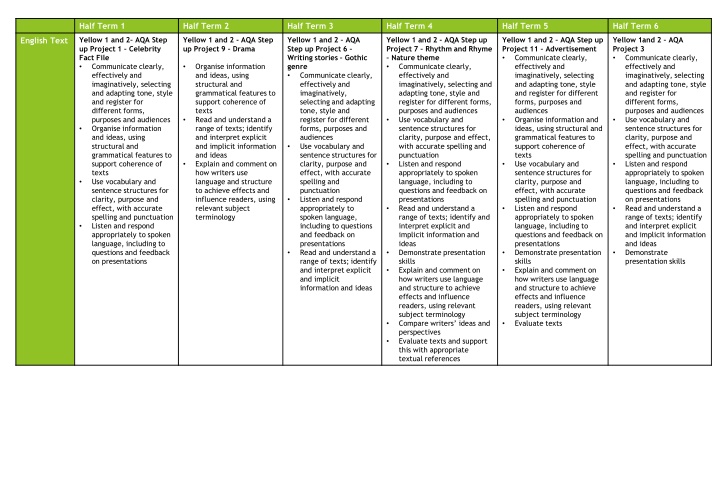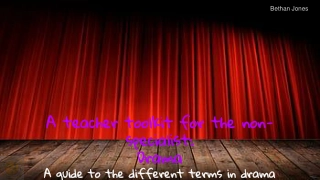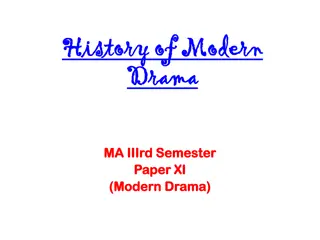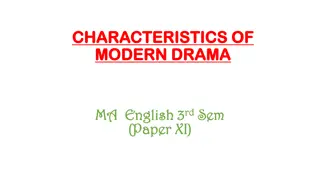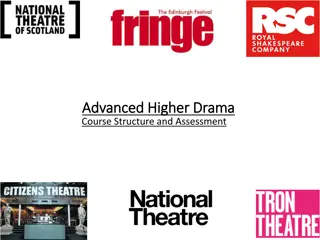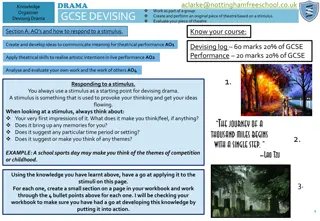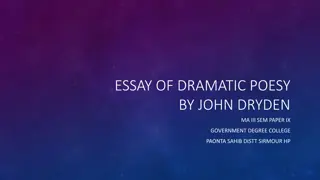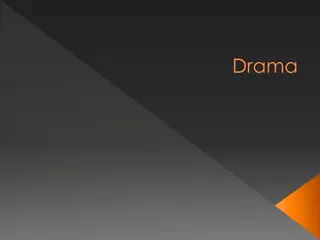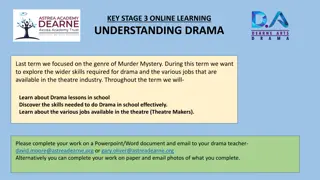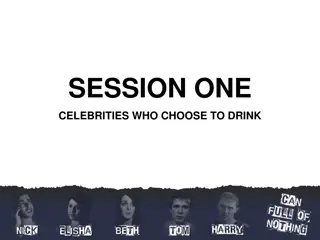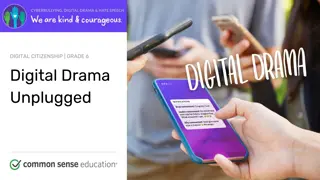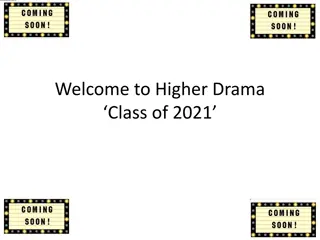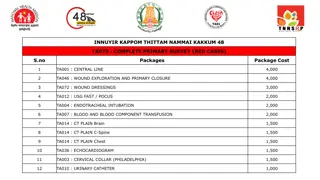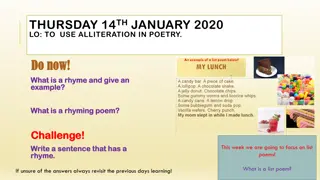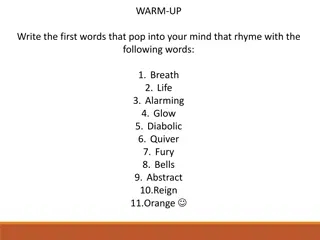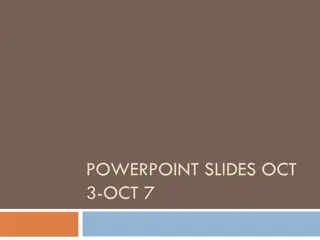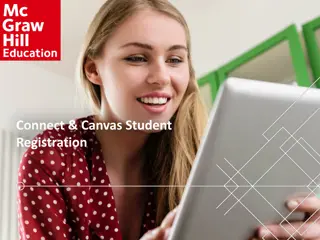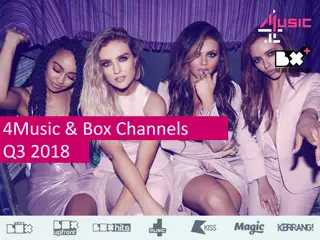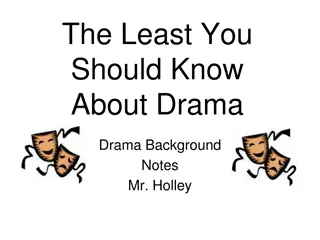Yellow 1 and 2 - AQA Step Up Project: Celebrities, Stories, Drama, Rhyme, and Advertisement
In this study program, students explore various forms of writing such as stories, drama, rhythm, and advertisement. They learn to communicate effectively, adapt tone and style, use vocabulary for clarity, and understand implicit information. Through the projects, they enhance their presentation skills, analyze language use by writers, and evaluate texts.
Download Presentation

Please find below an Image/Link to download the presentation.
The content on the website is provided AS IS for your information and personal use only. It may not be sold, licensed, or shared on other websites without obtaining consent from the author.If you encounter any issues during the download, it is possible that the publisher has removed the file from their server.
You are allowed to download the files provided on this website for personal or commercial use, subject to the condition that they are used lawfully. All files are the property of their respective owners.
The content on the website is provided AS IS for your information and personal use only. It may not be sold, licensed, or shared on other websites without obtaining consent from the author.
E N D
Presentation Transcript
Half Term 1 Half Term 2 Half Term 3 Half Term 4 Half Term 5 Half Term 6 Yellow 1 and 2 AQA Step up Project 1 Celebrity Fact File Communicate clearly, effectively and imaginatively, selecting and adapting tone, style and register for different forms, purposes and audiences Organise information and ideas, using structural and grammatical features to support coherence of texts Use vocabulary and sentence structures for clarity, purpose and effect, with accurate spelling and punctuation Listen and respond appropriately to spoken language, including to questions and feedback on presentations Yellow 1 and 2 - AQA Step up Project 9 Drama Yellow 1 and 2 AQA Step up Project 6 Writing stories Gothic genre Communicate clearly, effectively and imaginatively, selecting and adapting tone, style and register for different forms, purposes and audiences Use vocabulary and sentence structures for clarity, purpose and effect, with accurate spelling and punctuation Listen and respond appropriately to spoken language, including to questions and feedback on presentations Read and understand a range of texts; identify and interpret explicit and implicit information and ideas Yellow 1 and 2 - AQA Step up Project 7 Rhythm and Rhyme Nature theme Communicate clearly, effectively and imaginatively, selecting and adapting tone, style and register for different forms, purposes and audiences Use vocabulary and sentence structures for clarity, purpose and effect, with accurate spelling and punctuation Listen and respond appropriately to spoken language, including to questions and feedback on presentations Read and understand a range of texts; identify and interpret explicit and implicit information and ideas Demonstrate presentation skills Explain and comment on how writers use language and structure to achieve effects and influence readers, using relevant subject terminology Compare writers ideas and perspectives Evaluate texts and support this with appropriate textual references Yellow 1 and 2 AQA Step up Project 11 Advertisement Communicate clearly, effectively and imaginatively, selecting and adapting tone, style and register for different forms, purposes and audiences Organise information and ideas, using structural and grammatical features to support coherence of texts Use vocabulary and sentence structures for clarity, purpose and effect, with accurate spelling and punctuation Listen and respond appropriately to spoken language, including to questions and feedback on presentations Demonstrate presentation skills Explain and comment on how writers use language and structure to achieve effects and influence readers, using relevant subject terminology Evaluate texts Yellow 1and 2 AQA Project 3 Communicate clearly, effectively and imaginatively, selecting and adapting tone, style and register for different forms, purposes and audiences Use vocabulary and sentence structures for clarity, purpose and effect, with accurate spelling and punctuation Listen and respond appropriately to spoken language, including to questions and feedback on presentations Read and understand a range of texts; identify and interpret explicit and implicit information and ideas Demonstrate presentation skills English Text Organise information and ideas, using structural and grammatical features to support coherence of texts Read and understand a range of texts; identify and interpret explicit and implicit information and ideas Explain and comment on how writers use language and structure to achieve effects and influence readers, using relevant subject terminology
Yellow 1 Myths and Legends Yellow 2 Goodnight Mr. Tom Yellow 1 Robinson Crusoe Yellow 2 Stories from other cultures Yellow 1 Shakespeare Julius Caesar Yellow 2 Shakespeare A midsummer Night s Dream English Literature Reading Maintain positive attitudes to reading and an understanding of what have read by - Continuing to read and discuss an increasing wide range of fiction - Reading books that are structured in different ways and reading for a range of purposes - Increasing their familiarity with a wide range of books, including myths, legends and traditional stories, modern fiction, fiction from our literary heritage, and books from other cultures and traditions - Identifying and discussing themes and conventions in and across a wide range of writing - Making comparisons within and across books - Asking questions to improve their understanding - Checking that the book makes sense to them, discussing their understanding and exploring the meaning of words in context - Predicting what might happen from details stated and implied - Identifying how language, structure and presentation contribute to meaning - Participate in discussions about books that are read to them and those that can read for themselves, building on their own and other s ideas and challenging views courteously Writing transcription Use dictionaries to check the spelling and meaning of words Use the first 3 or 4 letters of a word to check spelling, meaning or both of these in a dictionary Use a thesaurus Handwriting and presentation Write legibly, fluently and with increasing speed Writing Composition Plan their writing by - Identifying the audience for and purpose of the writing, selecting the appropriate form and using other similar writing as models for their own - Noting and developing initial ideas, drawing and reading and research where necessary - In writing narratives, considering how authors have developed characters and settings in what pupils have read, listened to or seen performed Draft and write by - Selecting appropriate grammar and vocabulary, understanding how such choices can change and enhance meaning - In narratives, describing settings, characters and atmosphere and integrating dialogue to convey character and advance the action Reading Maintain positive attitudes to reading and an understanding of what have read by - Continuing to read and discuss an increasing wide range of fiction - Reading books that are structured in different ways and reading for a range of purposes - Increasing their familiarity with a wide range of books, including myths, legends and traditional stories, modern fiction, fiction from our literary heritage, and books from other cultures and traditions - Identifying and discussing themes and conventions in and across a wide range of writing - Making comparisons within and across books - Asking questions to improve their understanding - Checking that the book makes sense to them, discussing their understanding and exploring the meaning of words in context - Predicting what might happen from details stated and implied - Identifying how language, structure and presentation contribute to meaning - Participate in discussions about books that are read to them and those that can read for themselves, building on their own and other s ideas and challenging views courteously Writing transcription Use dictionaries to check the spelling and meaning of words Use the first 3 or 4 letters of a word to check spelling, meaning or both of these in a dictionary Use a thesaurus Handwriting and presentation Write legibly, fluently and with increasing speed Writing Composition Plan their writing by - Identifying the audience for and purpose of the writing, selecting the appropriate form and using other similar writing as models for their own - Noting and developing initial ideas, drawing and reading and research where necessary - In writing narratives, considering how authors have developed characters and settings in what pupils have read, listened to or seen performed Draft and write by - Selecting appropriate grammar and vocabulary, understanding how such choices can change and enhance meaning - In narratives, describing settings, characters and atmosphere and integrating dialogue to convey character and advance the action Reading Maintain positive attitudes to reading and an understanding of what have read by - Continuing to read and discuss an increasing wide range of fiction - Reading books that are structured in different ways and reading for a range of purposes - Increasing their familiarity with a wide range of books, including myths, legends and traditional stories, modern fiction, fiction from our literary heritage, and books from other cultures and traditions - Identifying and discussing themes and conventions in and across a wide range of writing - Making comparisons within and across books - Asking questions to improve their understanding - Checking that the book makes sense to them, discussing their understanding and exploring the meaning of words in context - Predicting what might happen from details stated and implied - Identifying how language, structure and presentation contribute to meaning - Participate in discussions about books that are read to them and those that can read for themselves, building on their own and other s ideas and challenging views courteously Writing transcription Use dictionaries to check the spelling and meaning of words Use the first 3 or 4 letters of a word to check spelling, meaning or both of these in a dictionary Use a thesaurus Handwriting and presentation Write legibly, fluently and with increasing speed Writing Composition Plan their writing by - Identifying the audience for and purpose of the writing, selecting the appropriate form and using other similar writing as models for their own - Noting and developing initial ideas, drawing and reading and research where necessary - In writing narratives, considering how authors have developed characters and settings in what pupils have read, listened to or seen performed Draft and write by - Selecting appropriate grammar and vocabulary, understanding how such choices can change and enhance meaning - In narratives, describing settings, characters and atmosphere and integrating dialogue to convey character and advance the action
Yellow 1 and 2 Place Value, sequencing and order Count to and across 100, forwards and backwards from any given number Count, read and write numbers to 100 in numerals Use language of: equal to, more than, less than (fewer), most, least Given a number, identify one more or less than Recognise the place value of each digit in a two-digit number Yellow 1 and 2 Addition and Subtraction Add and subtract numbers using concrete objects, pictorial representations, and mentally, including : a two-digit number and ones, a two-digit numbers and tens, two two-digit numbers, adding three-digit numbers Recall and use addition and subtraction facts to 20 fluently, and derive and use related facts up to 100 Yellow 1 and 2 Multiplication and Division Recall and use multiplication and division facts for the 2,5 and 10 multiplication tables Solve problems involving multiplication and division (including those with remainders), using materials, arrays, repeated addition, mental methods, and multiplication and division facts, including problems in contexts Show that multiplication of two numbers can be done in any order (commutative) and division of one number by another cannot Yellow 1 and 2 Fractions Understand that a fraction can describe part of a set Recognise, find, name and write fractions 1/3, , 2/4 and of a length, shape, set of objects or quantity Understand the larger the denominator is, the more pieces it is split into and therefore the smaller each part will be Yellow 1 and 2 Percentages and decimals recognise the per cent symbol (%) and understand that per cent relates to number of parts per hundred and write percentages as a fraction with denominator 100 Yellow 1 and 2 Four functions Revision of previous objectives related to each of the four functions Maths Number skills Yellow 1 2D and 3D shape Identify and describe the properties of 2D and 3D shapes, including the numbers of sides and line of symmetry in a vertical line Identify 2D shapes on the surface of 3D shapes Compare and sort common 2D and 3D shapes and everyday objects Yellow 1 Mass and Capacity Choose and use appropriate standard units to estimate and measure Compares and orders lengths, mass, volume/capacity and records the results using <,> and = Yellow 1 Time Compare and sequence intervals of time Tell and write time to five minutes, including quarter past/to the hour and draw hands on clock Yellow 1 Money Recognise and use symbols for pounds and pence; combine amounts to make a particular value, find different combinations of coins that equal the same amount of money, give change Yellow 1 and 2 Length and height Choose and use appropriate standard units to estimate and measure Compares and orders lengths and records the results using <,> and = Yellow 1 Interpreting data Interpret and construct simple pictograms, tally charts, block diagrams and simple tables Sort objects, numbers and shapes to a given criterion and their own Maths - topic Yellow 2 Money Recognise and use symbols for pounds and pence; combine amounts to make a particular value, find different combinations of coins that equal the same amount of money, give change Yellow 2 Time Compare and sequence intervals of time Tell and write time to five minutes, including quarter past/to the hour and draw hands on clock Yellow 2 - Perimeter and Area Measure and calculate the perimeter of a rectilinear figure (including squares) in cm and m Knows area is a measure of surface within a given boundary Finds the area of rectilinear shapes by counting squares Yellow 2 - 2D and 3D shape Identify and describe the properties of 2D and 3D shapes, including the numbers of sides and line of symmetry in a vertical line Identify 2D shapes on the surface of 3D shapes Compare and sort common 2D and 3D shapes and everyday objects Yellow 2 - Interpreting data Interpret and construct simple pictograms, tally charts, block diagrams and simple tables Sort objects, numbers and shapes to a given criterion and their own
Yellow 1 and 2 Cells and Reproduction To know that cells are the basic building blocks of living things. To understand that cells can specialize to perform different functions in the body, to include the sex cells/gametes (sperm and egg cells). To know that the job of a sperm cell is to carry genetic material to an egg cell. To understand the process of fertilsation. To know the different ways in which organisms reproduce (to include bacteria, microbes, plants and mammals such as humans). Yellow 1 and 2 Light & Sound To know that light travels to our eyes faster that sound travels to our ears which is why we see things before we hear them (for example thunder and lightning). To have an understanding of the properties of light and how it behaves (eg: looking at light travelling in straight lines, reflection and white light splitting into the 7 colours of the rainbow. To have an understanding of the properties of sound (for example looking at pitch and volume as well as how sound bounces off surfaces to produce echoes). Yellow 1 and 2 States of Matter To know the 3 states of matter including everyday examples of each. To understand how the properties of solids are related to their structure. To understand how the properties of liquids are related to their structure. To understand how the properties of gases are related to their structure. To that substances can change between the 3 states of matter in the processes of freezing, melting, condensation and sublimation. Science Yellow 1 and 2 Creation How did life on earth begin? Across a range of religions and beliefs Respecting all religions and others beliefs Important customs and festivals Special books and buildings Related symbols Communicate simple facts about religion and important people Identify a key belief of a religion Know we all make decisions about how we live Make simple comparisons between the different religions Know we all make decisions about how we live Yellow 1 and 2 Places of Worship - In what way do special places help people to feel connected to God? Across a range of religions and beliefs Respecting all religions and others beliefs Special books and buildings Describe some main practises of worship Make simple comparisons between the different religions identify the key practises of a religion Know we all make decisions about how we live Yellow 1 and 2 Festivals How are important moments celebrated in different religions? Across a range of religions and beliefs Respecting all religions and others beliefs Important customs and festivals Make simple comparisons between the different religions identify the key practises of a religion Know we all make decisions about how we live Yellow 1 and 2 Food How does food connect people to God? Across a range of religions and beliefs Respecting all religions and others beliefs Make simple comparisons between the different religions identify the key practises of a religion Know we all make decisions about how we live Yellow 1 and 2 Symbols - How can God and religion be represented? Across a range of religions and beliefs Respecting all religions and others beliefs Related symbols Make simple comparisons between the different religions identify the key practises of a religion Yellow 1 and 2 Stories How do stories help religions communicate their beliefs? Across a range of religions and beliefs Respecting all religions and others beliefs How stories teach us about religion Make simple comparisons between the different religions RE Yellow 1 and 2 - Word, Font, cutting pasting, saving and retrieving Opening Saving Retrieving Editing Changing font (type, size and colour). Copying and pasting. Yellow 1 and 2 - Internet Safety To develop an understanding of all the ways in which we use the internet. Use technology safely, respectfully and responsibly. Recognise acceptable/unacceptable behaviour. Identify a range of ways to report concerns about content and contact. Yellow 1 and 2 - Stop motion and movie making Undertake creative projects that involve selecting, using and combining multiple applications, preferably across a range of devices, to achieve challenging goals. To use these skills in order to produce both stop motion animation and live action movies. Editing of these movies. Yellow 1 and 2 - Computer programming To learn some basic computer programming functions. To build and design lego robots which can then be programmed using a range of functions/controls. Yellow 1 and 2 - Coding Use the repeat command within a series of instructions. Use conditional statements. Use a variety of inputs. Computing
Yellow 1 Related to Ancient Greece Yellow 2 World War II/ Tectonic processes Intentionally represent an object or image understand how textures can be made using a variety of materials Communicate ideas through their use of colour, form, line and tone Use a growing art vocabulary Show confidence in using a variety of processes and make appropriate use of tools and materials Improve mastery of art and design technique Understand about the history of art, including periods, styles and major movements Select from and use specialist tools, techniques, processes, equipment and machinery precisely and with care Develop the creative, technical and practical expertise needed to perform everyday tasks confidently and to participate fully in an increasingly technological world Understand and apply the principles of nutrition and learn how to cook. Use research and exploration, such as a study of different cultures, to identify and understand user needs Yellow 1 Related to Ancient Greece Yellow 2 World War II/North and South Poles Intentionally represent an object or image understand how textures can be made using a variety of materials Communicate ideas through their use of colour, form, line and tone Use a growing art vocabulary Show confidence in using a variety of processes and make appropriate use of tools and materials Improve mastery of art and design technique Understand about the history of art, including periods, styles and major movements Select from and use specialist tools, techniques, processes, equipment and machinery precisely and with care Develop the creative, technical and practical expertise needed to perform everyday tasks confidently and to participate fully in an increasingly technological world Understand and apply the principles of nutrition and learn how to cook. Understand and apply the principles of nutrition and learn how to cook Use research and exploration, such as a study of different cultures, to identify and understand user needs Yellow 1 Related to voyages and pirates Yellow 2 Native America understand how textures can be made using a variety of materials understand how textures can be made using a variety of materials Understand about the history of art, including periods, styles and major movements Select from and use specialist tools, techniques, processes, equipment and machinery precisely and with care Develop the creative, technical and practical expertise needed to perform everyday tasks confidently and to participate fully in an increasingly technological world Understand and apply the principles of nutrition and learn how to cook. Understand and apply the principles of nutrition and learn how to cook Use research and exploration, such as a study of different cultures, to identify and understand user needs Yellow 1 and 2 Rivers Intentionally represent an object or image understand how textures can be made using a variety of materials Communicate ideas through their use of colour, form, line and tone Use a growing art vocabulary Show confidence in using a variety of processes and make appropriate use of tools and materials Improve mastery of art and design technique Select from and use specialist tools, techniques, processes, equipment and machinery precisely and with care Develop the creative, technical and practical expertise needed to perform everyday tasks confidently and to participate fully in an increasingly technological world Understand and apply the principles of nutrition and learn how to cook. Understand and apply the principles of nutrition and learn how to cook Use research and exploration, such as a study of different cultures, to identify and understand user needs Yellow 1 China Yellow 2 China/1970s and 80s Intentionally represent an object or image understand how textures can be made using a variety of materials Communicate ideas through their use of colour, form, line and tone Respond to ideas around colour and learn about primary and secondary colours Show confidence in using a variety of processes and make appropriate use of tools and materials Learn about great artist Select from and use specialist tools, techniques, processes, equipment and machinery precisely and with care Develop the creative, technical and practical expertise needed to perform everyday tasks confidently and to participate fully in an increasingly technological world Understand and apply the principles of nutrition and learn how to cook. Understand and apply the principles of nutrition and learn how to cook Use research and exploration, such as a study of different cultures, to identify and understand user needs Art / D.T./ Food Technology
Yellow 1 and 2 World War II A study of an aspect or theme in British history Know and understand the history of these islands as a coherent, chronological narrative Understand historical concepts such as continuity and change, cause and consequence Understand methods of historical enquiry Yellow 1 and 2 Native America * Understand nature of ancient civilisations Yellow 1 and 2- 1970s and 1980s A study of an aspect or theme in British history Know and understand the history of these islands as a coherent, chronological narrative Understand nature of ancient civilisations Understand historical concepts such as continuity and change, cause and consequence Understand methods of historical enquiry History Yellow 1 and 2 Tectonic processes Understand the processes that give rise to key physical and human geographical features of the world Identify seasonal and daily weather patterns Yellow 1 and 2 North and South Poles Develop contextual knowledge of the location of globally significant places Interpret a range of sources of geographical information Understand geographical similarities and differences Yellow 1 and 2 Rivers and waterways Develop contextual knowledge of the location of globally significant places Interpret a range of sources of geographical information Understand geographical similarities and differences Yellow 1 and 2 - China Develop contextual knowledge of the location of globally significant places Interpret a range of sources of geographical information Understand geographical similarities and differences Geography Yellow 1 and 2 - Exploring our environment Learn a new skill or begin to develop a previously learnt skill Nature collages Clay leaf prints Nature investigation Explorer hunt Visit a nature reserve Natural art Yellow 1 and 2 - Looking after our environment Participate in a class project within school or the local community Sorting and recycling materials Junk modelling Visit a recycling centre Making natural water filters Making seed bombs Litter picking in local community Yellow 1 and 2 - Wildlife Make something to sustain wildlife in local area Mini-beast/wildlife hunt Mini-beast nature collages Salt dough mini- beasts Pond dipping Animal calls Animal tracks Yellow 1 and 2 - Habitats Participate in a class project within school or the local community Make a wormery Identify animal habitats around the world Shoe box habitat project Make bird feeders Make a bat box Nature web Yellow 1 and 2 - Food and Shelter Participate in a class project within school or the local community Food hygiene and fire safety Build a den Potato peeler whittling Tasting foods from around the world Putting up and packing away tents Campfire cooking Yellow 1 and 2 - Yellow 1 - Navigation and Travel Early route planning and map reading skills Safe travel, road safety and stranger danger Learning about compass points Giving directions to different places Planning trips into the community Duchess of Ely
strengths What personal strengths can we see in other people? How do other people s opinions of what we are good at affect how we feel about ourselves? What strategies can we use to manage negative opinions/comments Self-awareness: Skills for learning How do we like to learn? How does it feel when we achieve a target? How might our personal strengths, interests and skills help us in out future lives? safe online What the risks of social media? How can we respond to content that is inappropriate? What rules are there for keeping safe using social media? Managing feelings: self-esteem and unkind comments What is the difference between helpful/kind and unhelpful/unkind comments? How to challenge unkind comments directed at us or others feelings What responses to feeling unhappy are unhelpful and why? How do these responses affect other people? What can we do to support others if they are feeling strong emotions? Self-care, support and safety: Feeling frightened/worried What is harassment? What is unwanted physical contact? How can we get help? Rights and Responsibilities What are the similarities and differences among people of different race, faith and culture? What rights and responsibilities do e have inside and outside of school? How does stereotyping lead to discrimination? What physical changes happen during puberty? What aspects of personal hygiene we can take responsibility for What are the functions of the reproductive organs? What are the different stages of reproductions, pregnancy and birth? Feeling unwell Why is it important to follow hygiene routines to stop the spread of germs? How can we take responsibility for our own physical and metal health? How do we know who to trust for advice? Healthy lifestyles: Elements of a healthy lifestyle What different ways are there to have a healthy lifestyle? What might affect the choices that we make to maintain a healthy lifestyle? Yellow 1 and 2 Team Games Football Communication and listening Team work Tactical thinking Persistence and resilience Skills progression leadership Yellow 1 and 2 Team Games Net and wall Communication and listening Persistence and resilience Motivation Improvement and progression Yellow 1 and 2 Gymnastics Communication and listening Team work Gross and fine motor skills Skills progression and sequencing Persistence and resilience Creative and planning Leadership Yellow 1 and 2 Fitness/ Circuits Communication and listening Persistence and resilience Skills progression Leadership Yellow 1 and 2 Team Games Striking and Fielding Communication and listening Team work Tactical thinking Persistence and resilience Skills progression leadership Yellow 1 and 2 Athletics Communication and listening Team work Gross and fine motor skills Persistence and resilience Skills progression Leadership Planning and evaluating Sportsmanship PE Yellow 1 and 2 Describe your strengths and preferences Identify personal networks of support, including how to access and make the most of impartial face-to- face and digital careers information, advice and guidance Know how to make plans and decisions, carefully including negotiating with those who can help you get the qualifications, skills and experience you need Yellow 1 and 2 Describe different explanations of what careers are and how they can be developed Give examples of different kinds of work and why people s satisfaction with their working lives can change Be aware of the laws and by-laws relating to young people s permitted hours and types of employment; and know how to minimise health and safety risks to you and those around you Yellow 1 and 2 Be able to focus on the positive aspects of your well-being, progress and achievements Give examples of different business organisational structure Be aware of what labour market information is and how it can be useful to you Yellow 1 and 2 Recognise when you are using qualities and skills that entrepreneurs demonstrate Show that you can manage a personal budget and contribute to household and school budgets Yellow 1 and 2 Know how to prepare and present yourself well when going through a selection process Recognise the qualities you have demonstrated both in and out of school that will help to make you employable Identify how to stand up to stereotyping and discrimination that is damaging to you and those around you Yellow 1 and 2 Explain how you are benefitting as a learner from careers, employability and enterprise activities and experiences Know how to identify and systemically explore the options open to you at a decision point Show that you can be positive, flexible and well-prepared at transition points in your life Careers
